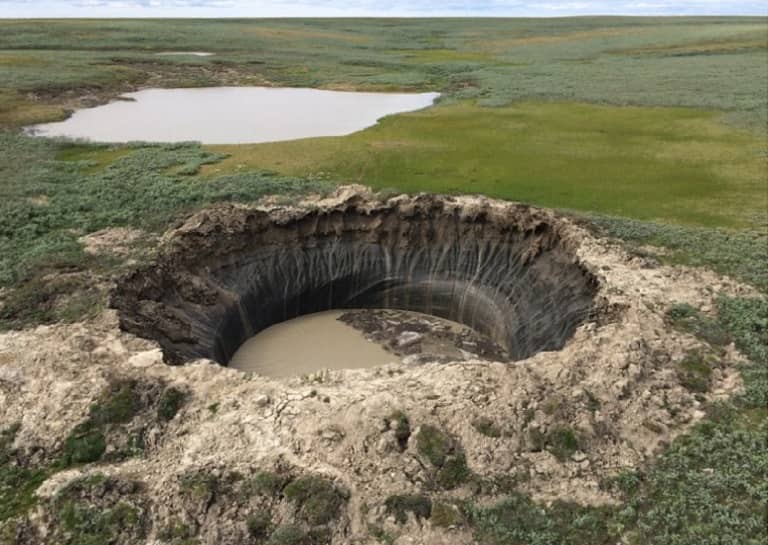Siberia might be sitting on a massive explosion field, as the Ural Branch of the Russian Academy of Science speculates that over 7,000 methane-filled ground bubbles are close to an explosion in the Yamalo-Nenets Autonomous District (YANAO) in Siberia. These methane bubbles have been found in the Yamal Peninsula and Gydan plane, and already some explosions have created large volcano’s tip like craters.
The scientists are pinning this on the significant increase in temperature in the Arctic region that has caused the permafrost to thaw and produce high amounts of methane gas. We have recorded a global temperature spike of around 1.5 degrees Celsius, which apparently was significant enough to give rise to the highly explosive methane bubbles in Serbia.
The video below shows these bubble filled methane holes that resemble a volcano tip.
Vasily Bogoyavlenski from the Russian Academy of Science explains,
“Gas rising to the surface through the systems of faults and cracks causes overpressure in the palaeo-permafrost clay layers and breaks through the weakened parts of it, forming the gas springs and blowout craters.”
An investigation revealed that these punctures are releasing huge amounts of greenhouse gasses, about 1,000 times more methane compared to the atmospheric levels and 25 times more carbon dioxide.
This particular part of Siberia dates back to the Cenomian Upper Cretaceous era (approximately 100 million years ago) which is a
“regional gas reservoir, is very shallow (500–1,200m) and the biggest gas fields including Bovanenkovo, Urengoy, Yamburg and Zapolyarnoye were discovered in this horizon” said Bogoyavlensky.
The methane is produced by heating the Earth’s surface, which now has put the energy producing Yamal region under an existential crisis. The area boasts many oil and gas production plants, and having highly explosive methane bubbles underneath is quite the recipe for a major disaster.
Scientists are now conducting field investigations to located these holes more accurately and better understand their nature to take adequate precautionary measures.

